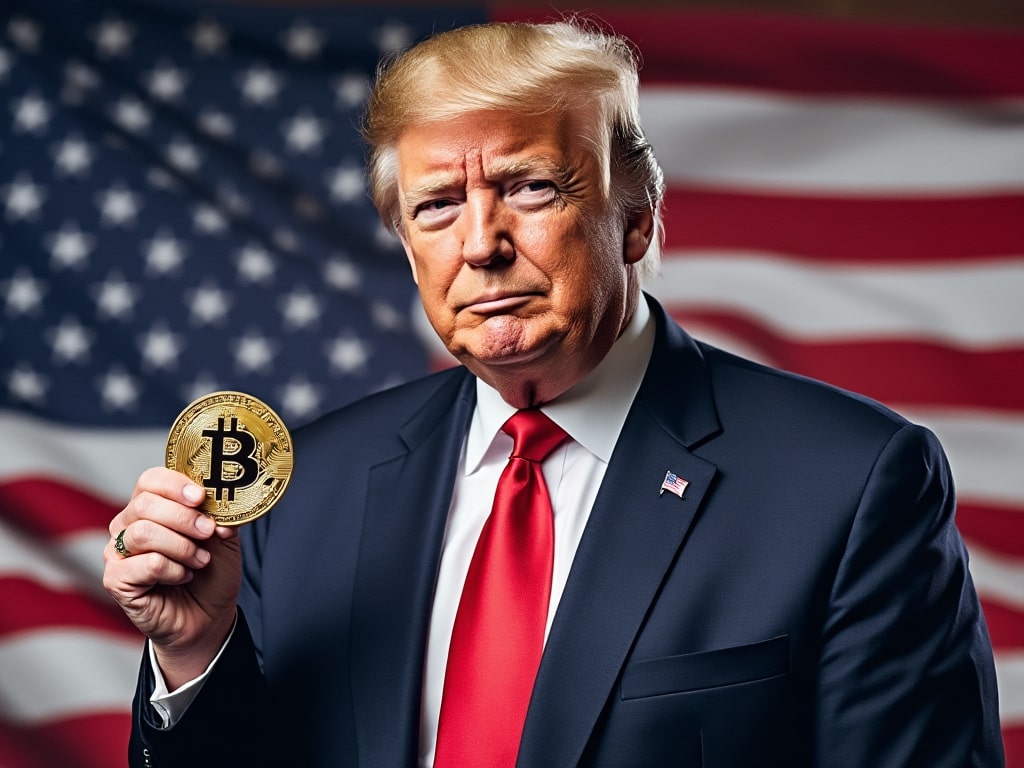Trump Allows Executive Order to Open $9T U.S. Retirement Market to Bitcoin and Crypto

Key Takeaways:
- Trump prepares executive order to unlock 401(k) and IRA markets for crypto, gold, and private equity.
- $9 trillion retirement sector could soon offer Americans direct access to Bitcoin and digital assets.
- Federal agencies ordered to revise regulations, signaling a policy shift with major implications for crypto adoption.
President Donald Trump is reportedly set to sign a sweeping executive order that could reshape the U.S. retirement landscape by allowing cryptocurrencies like Bitcoin into 401(k) and IRA accounts. With the U.S. retirement market valued at over $9 trillion, the move could mark a historic turning point in mainstream crypto adoption and offer millions of Americans unprecedented control over how they invest for retirement.

Trump Pushes Crypto into the Retirement Mainstream
Sources close to the matter told the Financial Times that the Trump administration is finalizing an order to direct federal agencies to remove existing restrictions that limit alternative assets such as cryptocurrencies, gold, and private equity from professionally managed retirement portfolios.
Currently, most U.S. retirement accounts are restricted to traditional securities, such as mutual funds and index-tracking ETFs. Crypto investments, while technically allowed in self-directed IRAs, remain off-limits in most 401(k) plans due to Department of Labor (DOL) guidance that labels them as too risky.
If implemented, Trump’s order would reverse Biden-era DOL policies and create a regulatory path for managed retirement plans to include Bitcoin, Ethereum, stablecoins, and potentially tokenized securities.
Read More: Trump-Backed Truth Social Files to Launch Crypto ETF Holding $1B in BTC, ETH, and More
A $9 Trillion Market at the Crypto Tipping Point
As of March 2025, American workers hold approximately $8.7 trillion in 401(k) accounts, according to the Investment Company Institute. The inclusion of crypto, even at a conservative allocation of 2%, could bring $174 billion in potential inflows into the digital asset market.
This would mark the largest institutional wave of adoption in crypto’s history, far exceeding the impact of Bitcoin ETFs and hedge fund accumulation in previous years.
Trump’s executive order could direct regulators to:
- Reassess fiduciary standards to allow crypto in diversified plans
- Eliminate outdated restrictions on alternative asset exposure
- Provide a framework for custody, reporting, and consumer protections
Asset management firms like BlackRock, Fidelity, and Apollo which have been pushing for access to retirement capital, stand to benefit significantly. Some of these firms are already preparing crypto fund offerings that could be quickly integrated into retirement platforms if regulation allows.
Read More: Trump’s Crypto Empire Quietly Amasses Over $57M, Massive DeFi Bet Revealed in Disclosure
What Will Change for Retirement Savers?
The executive order would likely give employers and plan administrators more flexibility in structuring retirement products. This could mean:
- Crypto ETFs, including spot Bitcoin and Ethereum funds, added to target-date funds
- Access to diversified digital asset baskets in managed portfolios
- More room for self-directed 401(k)s to directly hold crypto through regulated custodians
While participation would remain voluntary, the shift would open new options for savers seeking growth assets or inflation hedges in a post-dollar-dominant economy.
The Trump administration has reportedly said the move is about “economic empowerment and investor freedom,” echoing his campaign promises to “unleash American innovation” and “end regulatory overreach.”

Federal Reversals, Legislative Momentum, and Crypto-Friendly States
The executive order would align with recent reversals in federal agency guidance. In May, the Department of Labor withdrew a 2022 bulletin that had cautioned against crypto in retirement accounts. The agency said it needed to “adapt to evolving market conditions and investment strategies.”
Legislation to extend retirement investment types has been in the works at least since 2022, meanwhile. The Retirement Savings Modernization Act, sponsored by Rep. Peter Meijer, sought to change the Employee Retirement Income Security Act (ERISA) to encompass crypto and other alternatives. Though the bill never became law, that language now is guiding administrative action.
At the state level, momentum has already built around crypto in retirement planning:
- North Carolina introduced two bills this year proposing that state pension funds allocate up to 5% to crypto.
- Michigan’s retirement system disclosed holdings of $6.6M in Bitcoin ETFs and $10M in Ethereum ETFs.
- Wisconsin’s Investment Board revealed $163M worth of spot Bitcoin ETF exposure in its portfolio.
These new entrants, demonstrate growing institutional demand for regulated crypto exposure, particularly among public pension funds looking to diversify in a high-interest rate environment.
A Strategic Political and Financial Play
Trump’s new crypto push has been seen by many as a tactical political play to drum up support from younger voters, crypto supporters, and financial freedom advocates.
The crypto community played a role in Trump’s 2024 electoral comeback. His administration has since reversed course on suffocating crypto policies and implied there may be exemptions from capital gains taxes for small crypto sales, a huge incentive for retail adoption.
Trump’s media holdings include a large digital presence and he’s spent on digital ads. Donald Trump has also launched his own stablecoin project and supported crypto friendly legislation. These moves make him the most crypto-aligned U.S. president yet.
The executive order that is expected to be unveiled goes much further than symbolism, providing concrete structural change that could reshape the way the American people accrue wealth in the digital era.
The post Trump Allows Executive Order to Open $9T U.S. Retirement Market to Bitcoin and Crypto appeared first on CryptoNinjas.
